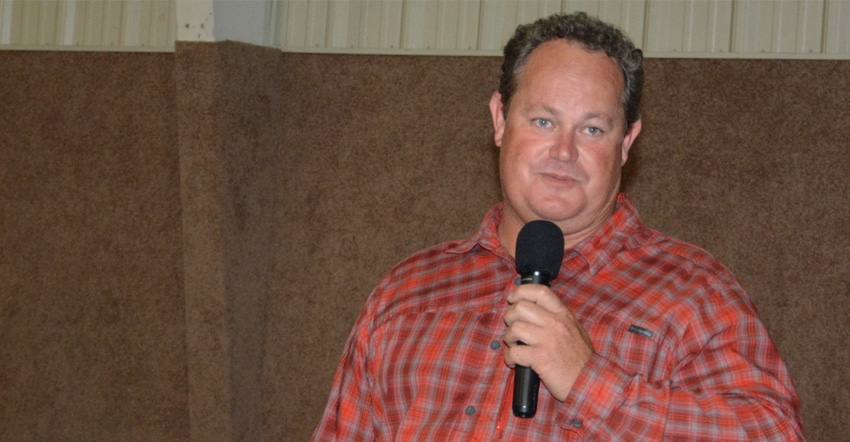
When Nick Vos moved to Hugoton, the South Africa native brought a long family tradition of raising sheep with him. And in the often-harsh climate he found in his new home — he jokes that he moved for the weather — he soon developed a commitment to cover crops as the best way to provide forage for his livestock and to add to the health and fertility of the soil.
“We are all aware of the debate about the wisdom of cover crops in the Dust Bowl states,” he told attendees of the Cheney Reservoir Watershed conservation district’s summer meeting at Yoder. “In dry areas, there’s the moisture versus ground cover versus soil health debate. I can tell you that you have to do what works for you. But I can tell you that cover crops absolutely work for me.”
He said getting started with no-till and cover crops requires you to have a no-till drill with good down pressure, a source for buying seed, and a mentor or support group.
“I tell people to start with your least-productive field. And keep in mind that living roots are 90% water,” he said. “We plant covers multiple times a year. If you think you don’t have enough moisture for cover crops, consider that fallow is a savings account with very low interest and high annual fees. Fallow kills biology. Before you think your fallow has better moisture, compare it to healthy soil. And let a moisture probe show you where there’s moisture and where there’s not.”
On his farm, Vos said they fly covers into corn in August; drill cereals after corn in December; drill a summer mix after wheat harvest; drill a high-nitrogen mix after dryland corn; and drill brassicas and legumes with wheat.
“I think the important thing to remember is to focus on what’s below the ground,” he said. “You get the best results when you push the field to the limit. You can do tissue tests. If they show a shortage of micronutrients that the soil test says are there, you know that the nutrients are not being made available to the plant. That’s a microbe problem.”
He said the brassicas in a cover crop mixture help free up nutrients. Mustards, radishes, kale and broccoli all exude acids that free phosphorus that is tied up in calcium. Brassicas also free up the middle of the food web: the mites, earthworms and other recycles that prey on bacteria and fungi, he said.
About the Author(s)
You May Also Like






